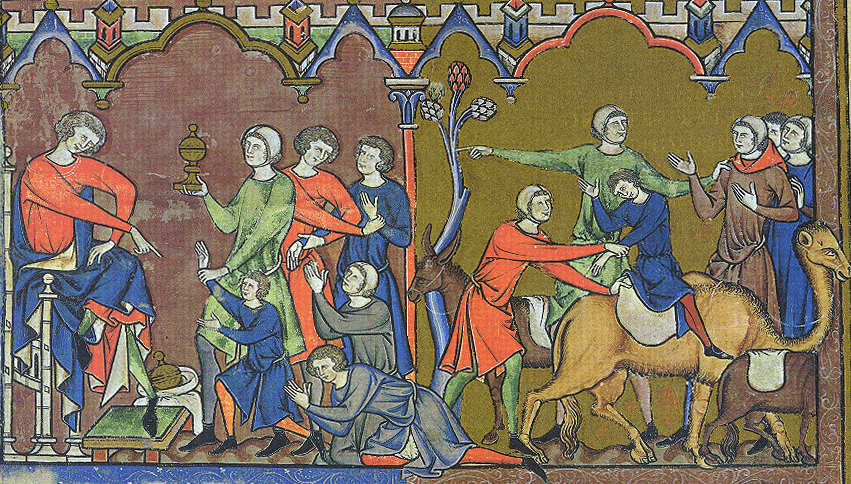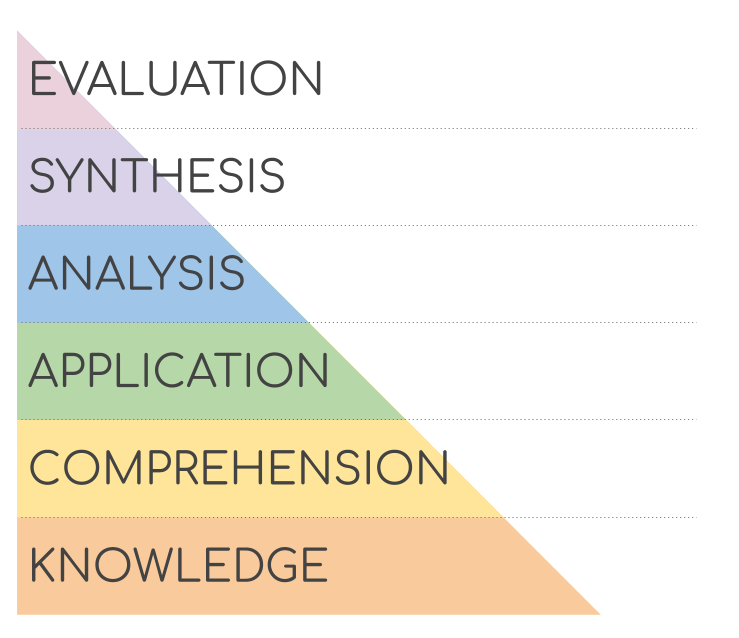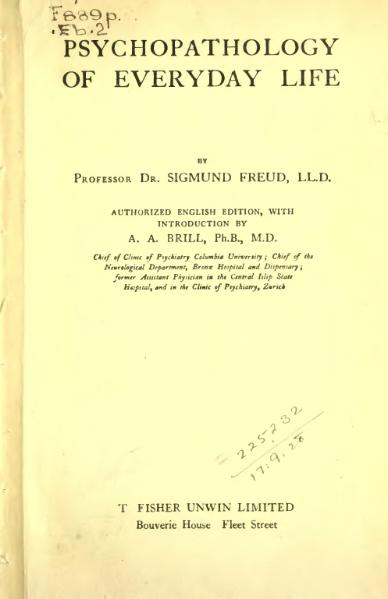|
Williams' Taxonomy
Williams' taxonomy is a hierarchical arrangement of eight creative thinking skills conceived, developed, and researched by Frank E. Williams, a researcher in educational psychology. The taxonomy forms the basis of a differentiated instruction curriculum model used particularly with gifted students and in gifted education settings. The first four levels are essentially cognitive (thinking), while the last four levels are affective (feeling) in nature. The eight levels are: #Fluency, the generation of many ideas, answers, responses, possibilities to a given situation/problem; #Flexibility, the generation of alternatives, variations, adaptations, different ideas/solutions/options; #Originality, the generation of new, unique and novel responses/solutions; #Elaboration, the expansion, enlargement, enrichment or embellishment of ideas to make it easier for others to understand or make it more interesting; #Risk-taking, experimenting, trying new challenges; #Complexity, the ability ... [...More Info...] [...Related Items...] OR: [Wikipedia] [Google] [Baidu] |
Hierarchy
A hierarchy (from Ancient Greek, Greek: , from , 'president of sacred rites') is an arrangement of items (objects, names, values, categories, etc.) that are represented as being "above", "below", or "at the same level as" one another. Hierarchy is an important concept in a wide variety of fields, such as architecture, philosophy, design, mathematics, computer science, organizational theory, systems theory, systematic biology, and the social sciences (especially political science). A hierarchy can link entities either directly or indirectly, and either vertically or diagonally. The only direct links in a hierarchy, insofar as they are hierarchical, are to one's immediate superior or to one of one's subordinates, although a system that is largely hierarchical can also incorporate alternative hierarchies. Hierarchical links can extend "vertically" upwards or downwards via multiple links in the same direction, following a path (graph theory), path. All parts of the hierarchy that are ... [...More Info...] [...Related Items...] OR: [Wikipedia] [Google] [Baidu] |
Complexity
Complexity characterizes the behavior of a system or model whose components interact in multiple ways and follow local rules, leading to non-linearity, randomness, collective dynamics, hierarchy, and emergence. The term is generally used to characterize something with many parts where those parts interact with each other in multiple ways, culminating in a higher order of emergence greater than the sum of its parts. The study of these complex linkages at various scales is the main goal of complex systems theory. The intuitive criterion of complexity can be formulated as follows: a system would be more complex if more parts could be distinguished, and if more connections between them existed. , a number of approaches to characterizing complexity have been used in science; Zayed ''et al.'' reflect many of these. Neil Johnson states that "even among scientists, there is no unique definition of complexity – and the scientific notion has traditionally been conveyed using partic ... [...More Info...] [...Related Items...] OR: [Wikipedia] [Google] [Baidu] |
Jean Piaget
Jean William Fritz Piaget (, ; ; 9 August 1896 – 16 September 1980) was a Swiss psychologist known for his work on child development. Piaget's theory of cognitive development and epistemological view are together called genetic epistemology. Piaget placed great importance on the education of children. As the Director of the International Bureau of Education, he declared in 1934 that "only education is capable of saving our societies from possible collapse, whether violent, or gradual". His theory of child development has been studied in pre-service education programs. Nowadays, educators and theorists working in the area of early childhood education persist in incorporating constructivist-based strategies. Piaget created the International Center for Genetic Epistemology in Geneva in 1955 while on the faculty of the University of Geneva, and directed the center until his death in 1980. The number of collaborations that its founding made possible, and their impact, ultimately le ... [...More Info...] [...Related Items...] OR: [Wikipedia] [Google] [Baidu] |
David R
David (; , "beloved one") was a king of ancient Israel and Judah and the Kings of Israel and Judah, third king of the Kingdom of Israel (united monarchy), United Monarchy, according to the Hebrew Bible and Old Testament. The Tel Dan stele, an Canaanite and Aramaic inscriptions, Aramaic-inscribed stone erected by a king of Aram-Damascus in the late 9th/early 8th centuries BCE to commemorate a victory over two enemy kings, contains the phrase (), which is translated as "Davidic line, House of David" by most scholars. The Mesha Stele, erected by King Mesha of Moab in the 9th century BCE, may also refer to the "House of David", although this is disputed. According to Jewish works such as the ''Seder Olam Rabbah'', ''Seder Olam Zutta'', and ''Sefer ha-Qabbalah'' (all written over a thousand years later), David ascended the throne as the king of Judah in 885 BCE. Apart from this, all that is known of David comes from biblical literature, Historicity of the Bible, the historicit ... [...More Info...] [...Related Items...] OR: [Wikipedia] [Google] [Baidu] |
Benjamin S
Benjamin ( ''Bīnyāmīn''; "Son of (the) right") blue letter bible: https://www.blueletterbible.org/lexicon/h3225/kjv/wlc/0-1/ H3225 - yāmîn - Strong's Hebrew Lexicon (kjv) was the younger of the two sons of Jacob and Rachel, and Jacob's twelfth and youngest son overall in Jewish, Christian and Islamic tradition. He was also considered the progenitor of the Israelite Tribe of Benjamin. Unlike Rachel's first son, Joseph, Benjamin was born in Canaan according to biblical narrative. In the Samaritan Pentateuch, Benjamin's name appears as "" ( Samaritan Hebrew: , "son of days"). In the Quran, Benjamin is referred to as a righteous young child, who remained with Jacob when the older brothers plotted against Joseph. Later rabbinic traditions name him as one of four ancient Israelites who died without sin, the other three being Chileab, Jesse and Amram. Name The name is first mentioned in letters from King Sîn-kāšid of Uruk (1801–1771 BC), who called himself “Ki ... [...More Info...] [...Related Items...] OR: [Wikipedia] [Google] [Baidu] |
Bloom's Taxonomy
Bloom's taxonomy is a framework for categorizing Educational aims and objectives, educational goals, developed by a committee of educators chaired by Benjamin Bloom in 1956. It was first introduced in the publication ''Taxonomy of Educational Objectives: The Classification of Educational Goals''. The taxonomy divides learning objectives into three broad domains: cognitive (knowledge-based), affective (emotion-based), and psychomotor (action-based), each with a hierarchy of skills and abilities. These domains are used by educators to structure curricula, assessments, and teaching methods to foster different types of learning. The cognitive domain, the most widely recognized component of the taxonomy, was originally divided into six levels: Knowledge, Comprehension, Application, Analysis, Synthesis, and Evaluation. In 2001, this taxonomy was revised, renaming and reordering the levels as Remember, Understand, Apply, Analyze, Evaluate, and Create. This domain focuses on intellectual s ... [...More Info...] [...Related Items...] OR: [Wikipedia] [Google] [Baidu] |
Everyday Life
Everyday life, daily life or routine life comprises the ways in which people typically act, think, and feel on a daily basis. Everyday life may be described as mundane, routine, natural, habitual, or Normality (behavior), normal. Human diurnality means most people sleep at least part of the night and are active in daytime. Most eat two or three meals in a day. Working time (apart from shift work) mostly involves a daily schedule, beginning in the morning. This produces the daily rush hours experienced by many millions, and the drive time focused on by radio broadcasters. Evening is often leisure time. Bathing every day is a custom for many. Beyond these broad similarities, lifestyles vary and different people spend their days differently. For example, nomadic life differs from sedentism, and among the sedentary, Urban area, urban people live differently from Rural area, rural folk. Differences in the lives of the wealth, rich and the poverty, poor, or between manual labor, ... [...More Info...] [...Related Items...] OR: [Wikipedia] [Google] [Baidu] |
Creativity
Creativity is the ability to form novel and valuable Idea, ideas or works using one's imagination. Products of creativity may be intangible (e.g. an idea, scientific theory, Literature, literary work, musical composition, or joke), or a physical object (e.g. an invention, dish or meal, piece of Jewellery, jewelry, costume, a painting). Creativity may also describe the ability to find Creative problem-solving, new solutions to problems, or new methods to accomplish a goal. Therefore, creativity enables people to Solves problem, solve problems in new ways. Most ancient cultures (including Ancient Greece, History of China#Ancient China, Ancient China, and Outline of ancient India, Ancient India) lacked the concept of creativity, seeing art as a form of discovery rather than a form of creation. In the Judeo-Christian-Islamic tradition, creativity was seen as the sole province of God, and human creativity was considered an expression of God's work; the modern conception of creativi ... [...More Info...] [...Related Items...] OR: [Wikipedia] [Google] [Baidu] |
Proactivity
Proactivity or proactive behavior refers to self-initiated behavior that endeavours to solve a problem before it has occurred. Proactive behavior involves acting in advance of a future situation, rather than reacting. It refers to taking control of a situation and making early changes, rather than adjusting to a situation or waiting for something to happen. Reactivity, as a behaviour pattern, is a habitual mode of taking one's lead from the situation or a participant, rather than taking initiative to solve the problem on your own terms. In moderation, this can be an effective expression of social risk aversion. Taken to excess, reactivity is a form of disempowerment. History The use of the word ''proactive'' (or ''pro-active'') was limited to the domain of experimental psychology in the 1930s, and used with a different meaning. ''Oxford English Dictionary'' (OED) credits Paul Whiteley and Gerald Blankfort, citing their 1933 paper discussing proactive inhibition as the "impair ... [...More Info...] [...Related Items...] OR: [Wikipedia] [Google] [Baidu] |
Lateral Thinking
Lateral thinking is a manner of Problem solving, solving problems using an indirect and creativity, creative approach via reasoning that is not immediately obvious. Synonymous to thinking outside the box, it involves ideas that may not be obtainable using only traditional step-by-step logic. The cutting of the Gordian Knot is a classical example. The term was first used in 1967 by Maltese psychologist Edward de Bono who used the Judgement of Solomon, the Nine dots puzzle, Nine Dots Puzzle, and the sewing machine (automating the work rather than adding more workers) as examples, among many others, of lateral thinking. Lateral thinking deliberately distances itself from Vertical Thinking, the traditional method for problem solving. De Bono argues lateral thinking entails a switch-over from a familiar pattern to a new, unexpected one. Such insight sometimes takes the form of humour but can also be cultivated. Critics have characterized lateral thinking as a pseudo-science, ... [...More Info...] [...Related Items...] OR: [Wikipedia] [Google] [Baidu] |
Imagination
Imagination is the production of sensations, feelings and thoughts informing oneself. These experiences can be re-creations of past experiences, such as vivid memories with imagined changes, or completely invented and possibly fantastic scenes. Imagination helps apply knowledge to solve problems and is fundamental to integrating experience and the learning process. Imagination is the process of developing theories and ideas based on the functioning of the mind through a creative division. Drawing from actual perceptions, imagination employs intricate conditional processes that engage both semantic and episodic memory to generate new or refined ideas. This part of the mind helps develop better and easier ways to accomplish tasks, whether old or new. A way to train imagination is by listening to and practicing storytelling (narrative), wherein imagination is expressed through stories and writings such as fairy tales, fantasies, and science fiction. When children develop their i ... [...More Info...] [...Related Items...] OR: [Wikipedia] [Google] [Baidu] |
Curiosity
Curiosity (from Latin , from "careful, diligent, curious", akin to "care") is a quality related to inquisitive thinking, such as exploration, investigation, and learning, evident in humans and other animals. Curiosity helps Developmental psychology, human development, from which derives the process of learning and desire to acquire knowledge and skill. The term ''curiosity'' can also denote the behavior, characteristic, or emotion of being curious, in regard to the desire to gain knowledge or information. Curiosity as a behavior and emotion is the driving force behind human development, such as progress in science, language, and industry. Curiosity can be considered to be an evolutionary adaptation based on an organism's ability to learn. Certain curious animals (namely, Corvidae, corvids, octopuses, dolphins, elephants, rats, ''etc.'') will pursue information in order to adapt to their surrounding and learn how things work. This behavior is termed Neophile, neophilia, the lo ... [...More Info...] [...Related Items...] OR: [Wikipedia] [Google] [Baidu] |








